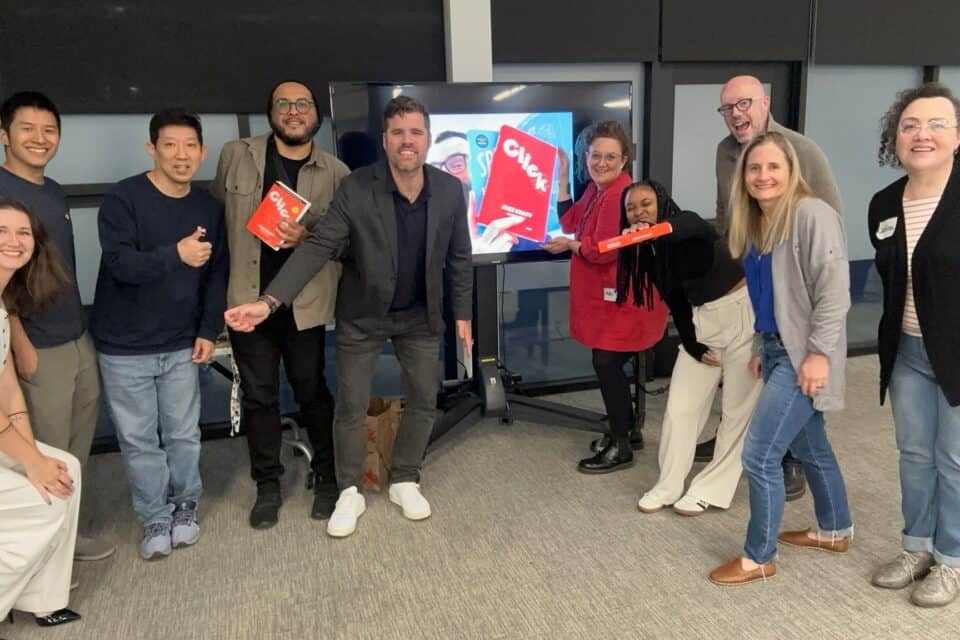Change your taxonomy to change the outcome of your meetings
Words are powerful. They hold weight and meaning, sometimes beyond what we immediately recognize when we use them. Take the word “meeting.” What do you think of when you hear it? Maybe you’re filled with dread, thinking about adding another unproductive time-suck onto your calendar. If so, you’re not alone. Most people don’t have a great relationship with meetings, and using the word itself can fill people with resistance and a predetermined notion of what to expect. We’re on a mission to change that.
Poor meeting culture is a problem because we need meetings; they are vital to company success.
Schedule & Label Meetings With Purpose
The problem with defaulting to the word “meeting” is that most of us are guilty of a particularly bad behavior in a meeting: gathering people only to give them a status update. This is simply a waste of everyone’s time. When we bring people together just to give status updates, no work gets done in the meeting; it’s not a productive meeting at all. When we call these types of gatherings “meetings”, people associate the word with this kind of experience, giving “meetings” a bad rap. An email, Slack message, or phone call is better suited for status updates. We must reserve true “meetings” for collaborative work sessions to get things done together.

I will admit, I am guilty of using the word “meeting”. I use the word “meeting” a lot. I say it often, and it is in the title of this article.
I bring this subject up to offer a suggestion: if we rebrand the word “meeting” to reflect the work we will actually do in it, we will have better meetings. We all want better meetings and to get rid of the ones that are pointless and waste our time. I have an easy and effective hack for you to do so: Change up your taxonomy. Be intentional with the words you use to set the right purpose for a meeting, and do your best to not use the actual word “meeting” in the title.
Specifically name your meetings like you would the subject line of an email. For example, “Team Sync” for team check-ins and to discuss current business happenings, and “Marketing Ideation” for a marketing team brainstorm session. What is the meeting about? What can people expect? That should be the name of your meeting.
Do the Work in the Meeting
My favorite meeting title upgrade is “Review” because the naming of it insists there is going to be an artifact that a group of people will review. This could be a prototype, a work-in-progress idea, a diagram, a marketing story, or anything that someone would have made. It allows the team to live out one of our 10 meeting mantras at Voltage Control: “no prototype no meeting.” It enforces that we do the work in the meeting–the gateway to truly productive meetings.

By simply taking some time to be intentional with the title of your meetings (there I go again), you are setting the tone for the participants. You are clearly defining a purpose. And with that purpose, you can then line up the correct exercises to keep all participants focused and engaged. You can do the work in your meeting rather than just providing another status update, where no productive work takes place, and you’ll likely have to make up for that labor that should have been done.
Build a Lexicon
Try this exercise to put this renaming method into practice: Look at your calendar and notice everything that is labeled as a meeting. Are there different categories of meetings? Can you call them something different/be more specific?
Identify the types of meetings you frequently have and build a lexicon specific to your company.
Here is an example of my calendar:

As you can see in the calendar above, you can replace “Meeting” with “Review”, “Pivot or Persevere”, or “Work Session” to more clearly define what the sync is about.
Pro tip: Rename your meetings when you send out an invitation on a calendar. This allows attendees to know what to expect and come more prepared.
This is just one technique to build better meeting systems for your company. Try it out and see how it transforms your meetings!




